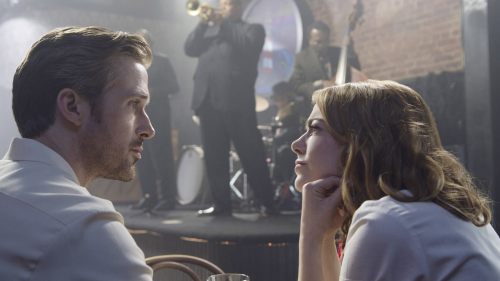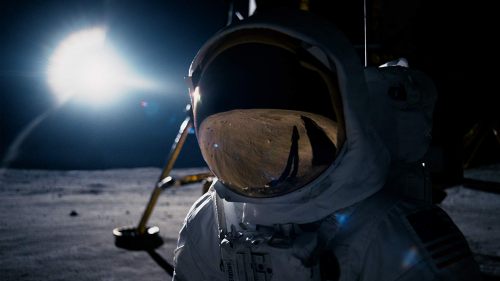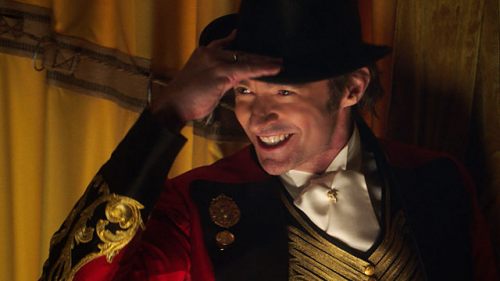Damien Chazelle Tells Us His Inspirations For LA LA LAND
In honor of La La Land, we're presenting a week of articles inspired by the film. You can buy your tickets here!
That thing you feel when you watch the trailer for a new, original sci-fi movie is distinctly different from what you feel during the trailers for La La Land. In fact, it’s closer to what you might feel every time there’s a new Star Wars trailer: nostalgia. It’s not, however, strictly limited to immediate familiarity, but that sense of familiarity is most certainly present. The sense that “they don’t make ‘em like this anymore,” stemming from the fact that you know, deep in your bones, that there was a time when they used to.
I’m no Hollywood purist, and I certainly don’t hold on to the past when it comes to cinema (give me the newest voice and the latest technical innovation any day of the week), but La La Land floored me with its multitudinous influences, and how it incorporates them into both its text and its aesthetic. Right before watching the film, in all its 35mm, anamorphic, 2.55:1 Cinemascope glory (in layman’s terms: wider, clearer and more beautiful than we’re used to), I spoke with director Damien Chazelle at PFF25 to discuss what went into his Technicolor dream.
We’ve all encountered musicals at an early age. For many of us, our first exposure to the form was through Disney; so too for Chazelle, who cites Dumbo, Pinocchio, Beauty and the Beast and The Lion King as early influences, in addition to The Wizard of Oz, but as one might expect after even glancing at the La La Land trailers, Chazelle’s musical inspirations are somewhat all-encompassing. “A big thing for me as a teen would be the French New Wave musicals,” he began, his self-professed “cinema junkie” eyes lighting up at the opportunity for a geek-out moment amidst the dignified red carpet bustle. “The Umbrellas of Cherbourg, The Young Girls of Rochefort, and then through those I kind of fell back in love with Hollywood musicals. Anything by Gene Kelly or Fred Astaire, anything that they did I just became a sucker for.”
La La Land is a piece that takes full advantage of one’s familiarity with the American musical, though the specific aesthetic parlance of that institution isn’t necessarily a prerequisite. As Chazelle’s Francophilic answer suggests (and as my own experience growing up in the heart of Bollywood might support), the musical is a cross-cultural cinematic language that, despite its divergent specifics, is rooted in the same exuberance, operatics and celebration of human emotion across the board. What’s more, La La Land’s approach to this celebratory form made perfect in the 1950s, one often seen as idealistic, has a specific awareness of how idealism might clash with a modern, cynical sensibility. It is, after all, a musical set in Los Angeles and focusing on the struggles of those who ride that same line, i.e. artists with a glimmer in their eye, often weighed down by defeat and self-doubt.
In this vein, Chazelle’s movie version of Los Angeles isn’t just drawn from other musicals. La La Land and its creator’s DNA draws from other forms of cinema, and its L.A.-specific influence may be its most interesting. As Chazelle notes, it takes cues from the likes of Sunset Boulevard, The Bad and the Beautiful, Boogie Nights, Short Cuts and Pulp Fiction. That’s a bold roster to boast for such a young filmmaker (Chazelle is thirty one), and it certainly brings to mind the sophomoric tendency to constantly reference one’s influence in superficial ways – lord knows, I was both surrounded by it and guilty of it myself as a student filmmaker – but Chazelle’s third feature treats its inspirations like the late-era work of a seasoned master, weaving them into the text and taking all the right thematic and aesthetic cues instead of merely aping the surface details.
In Chazelle’s own words, on the film wearing its influences on its sleeve:
“I feel like even if I don’t want them to, the movies that I’ve seen end up informing what I’m doing… I think the romanticism of some of the old Hollywood movies, everything from Charlie Chaplin to Douglas Sirk melodramas. A lot of the old Technicolor movies, just the way they use color. Anything that was shot in color in the ‘40s and ‘50s is already an inspiration for me just by the way they look.”
Chazelle certainly isn’t unaware of the novice tendency for overt homage, often a means to draw attention to one’s own cinematic encyclopedia, but the awareness with which he approaches even his most obvious references – intentionally bringing quintessential Hollywood-on-Hollywood musical Singin’ in the Rain to mind, with a wink and a smile – is not only a matter of restraint, but a matter of understanding the reasons behind the reference, and its textual appropriateness.
The film feels very much like a love letter to artists, and that it’s set in the heart of cinema itself feels like the perfect reason to display tender affection for the musicals that made up our childhoods. Or, as Chazelle puts it, “When you’re doing a movie that’s kind of about movies, it’s almost like an excuse to write a more explicit love letter to your cherished objects.”
Cherished objects.
Chazelle has nothing but selfless love for these movies, a deep affection that’s writ large all over the screen. I’d urge you to experience it for yourself, even if you’re a die-hard cynic. Hell, especially if you’re a die-hard cynic. It’s a movie that has a keen understanding of why movies matter, and it repackages this understanding as music and colour and joyful bombast.
La La Land begins its limited release on December 9th, before rolling out elsewhere in the weeks that follow.



